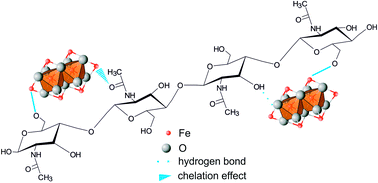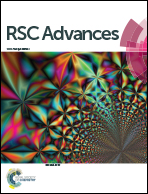Synthesis of nanostructured chitin–hematite composites under extreme biomimetic conditions†
Abstract
Chitin of poriferan origin is a unique and thermostable biological material. It also represents an example of a renewable materials source due to the high regeneration ability of Aplysina sponges under marine ranching conditions. Chitinous scaffolds isolated from the skeleton of the marine sponge Aplysina aerophoba were used as a template for the in vitro formation of Fe2O3 under conditions (pH ∼ 1.5, 90 °C) which are extreme for biological materials. Novel chitin–Fe2O3 three dimensional composites, which have been prepared for the first time using hydrothermal synthesis, were thoroughly characterized using numerous analytical methods including Raman spectroscopy, XPS, XRD, electron diffraction and HR-TEM. We demonstrate the growth of uniform Fe2O3 nanocrystals into the nanostructured chitin substrate and propose a possible mechanism of chitin–hematite interactions. Moreover, we show that composites made of sponge chitin–Fe2O3 hybrid materials with active carbon can be successfully used as electrode materials for electrochemical capacitors.


 Please wait while we load your content...
Please wait while we load your content...